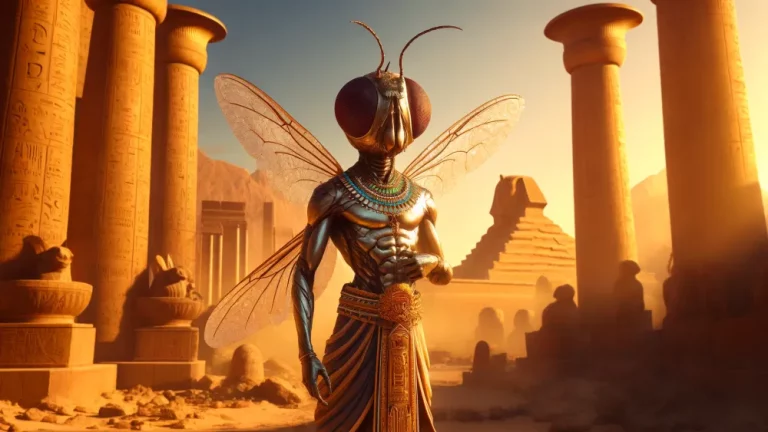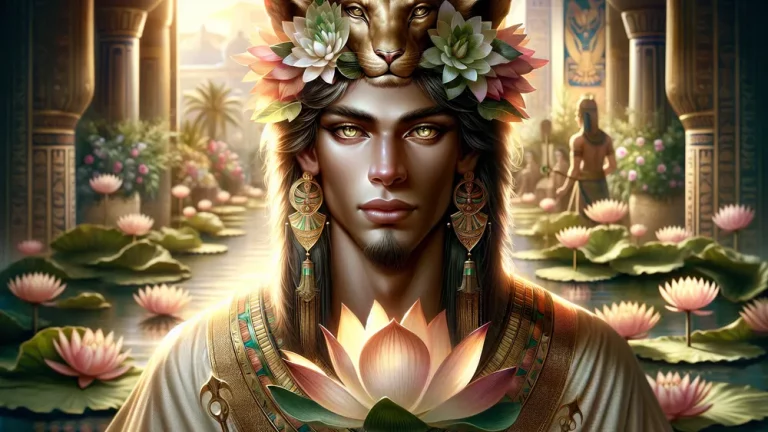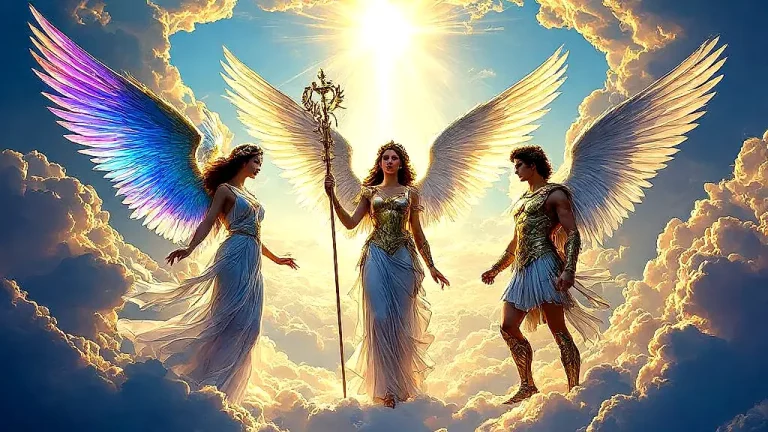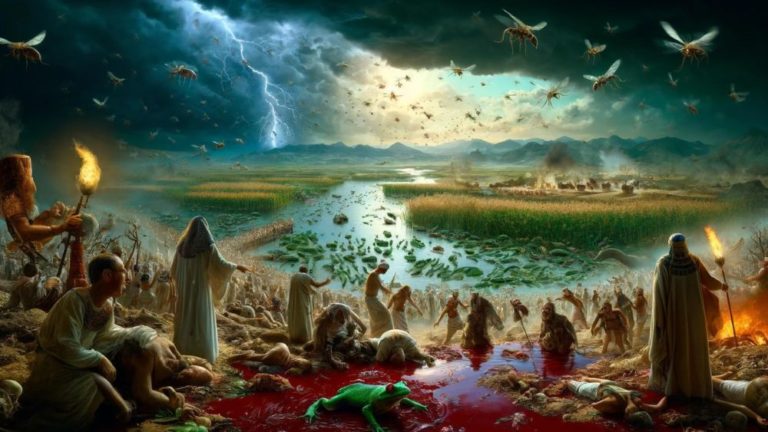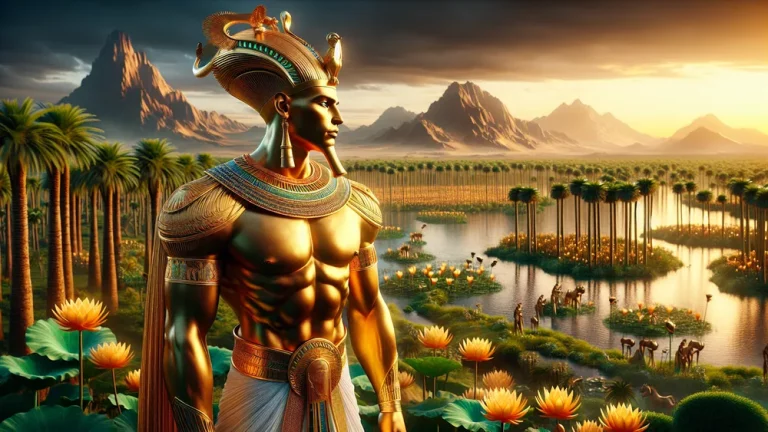Talos: The Bronze Giant Defender In Greek Mythology Legend
In the rich mix of Greek mythology, the figure of Talos means one of the more interesting characters, wrapped up in mystery and something like awe. Talos seems as a towering bronze giant with the job of protecting the island of Crete.
Key Points:
- Talos was a big bronze figure who watched over Crete to keep away invaders.
- Built by Hephaestus or given by Zeus, stories have different starts for him.
- Made only of bronze, he was very strong but had one main weakness.
- His life force was in one vein, stopped with a single nail.
- Featured in the tale of Jason and the Argonauts, the story details his defeat.
- Talos was a symbol of strength, watchfulness, and Crete’s safety.
- He left a mark on Greek art and tales as a picture of protection.
For people who are new to these stories, think about Talos being like an old version of a careful robot guardian, going around the island’s edge to keep out strangers. The attractiveness of this legend partly appears in the uncertainty about Talos’ beginnings and end.
Different stories present varied beginnings – some say he was made by the god Hephaestus, who is the most skilled maker among the gods, while others say Zeus, the top god, gave Talos to Minos, the chief of Crete. Such differences in tales mean how Greek myths have been told, which often means there are different versions of the same story.
As you explore the life of Talos, you will find the stories about his making, see his powerful job as a protector, and think about the mighty qualities that made him a hard-to-beat force in myths.
Talos: Overview and Key Facts
| Important Pieces | Information |
|---|---|
| Nature and Shape | Bronze giant given life, who was there to protect Crete. |
| Origin Ideas | Made by Hephaestus or gifted by Zeus, which shows different myth beginnings. |
| What It’s Made Of | Built entirely of bronze, which made sure he cannot be hurt. |
| Main Task | Guard Crete to keep threats away using just strength and being there. |
| Special Thing | Had a vein from neck to ankle that was closed with one nail. |
| Weakness | Vein having ichor, the thing that made him live forever, was his weak point. |
| Stories He’s In | Found in the tale of Jason and the Argonauts. |
| Ways He Lost | Different stories on how he lost, like enchantment by Medea or deception. |
| What He Means | Vigilance, strength, and the protective nature of Crete are seen in him. |
Unpacking the Legend of Talos
When we look more at the story of Talos, there are fascinating parts about how he was made, what he was supposed to do, and the stories that tell us about him in Greek mythology’s world.
Getting to Know Talos
In stories of Greek mythology, Talos is seen as a strong giant who carefully kept the island of Crete safe. Thought of like a first kind of a protective robot, Talos moved around Crete to stop any enemies from coming. His beginnings are talked about in many stories, with most saying gods were part of them. One tale says that Talos was cleverly built by Hephaestus, the god of fire who could make strong things. In another story, it appears that Zeus gave him to King Minos as a sign of help from gods. Each story tells about his unique start, even though details change a lot, which is usual in myth stories. Here are some important points about his start and job:
- Role in Mythology: To defend Crete and stop enemies from reaching its beaches.
- Mythological Origins:
- He was made by Hephaestus, meaning a god created him.
- Given by Zeus, meaning gods might have wanted to protect Crete, saying Talos was more than just a guard.
Talos was like an early-day robot built by Hephaestus and given by Zeus to guard Crete, meaning he was more than just a regular giant, and he was on duty to keep enemies off the island.
How Talos Came to Be and His Job
The beginning of Talos in Greek stories is interesting, with its roots tied to gods and their work. Two main stories talk about how he was made: one says Talos was shaped by Hephaestus, the god who was good at working with metal. He was known for making tools for gods and heroes, and this involves Talos’ smart design and strong build.
In this story, Talos is seen as a top example of made life, showing Hephaestus’ power to make metal come alive. Another tale suggests that Zeus, like an act of kindness, gave Talos to Minos, the king of Crete. This version sees Talos as a sign of godly help, where he was not just a guard, but a sign of Zeus’ favor, giving Crete a special level of safety.

These different stories mean the richness and variety in Greek tales, where a single character comes from different backgrounds, each adding to their mysterious feel. Looking at Talos’ main job, he is shown as a tireless protector of Crete, often going around the island three times a day to stop any invaders.
His ways of defending were advanced for those stories; as he was made of bronze, he was hard to hurt like usual living things were. But his most interesting part was what was inside: the hot blood, or ichor, that moved in his one vein – a way to protect and a possible weak spot.
Much like a modern security system that is often complex, yet with one critical flaw, Talos’ big vulnerability was this vein, closed with one nail. If it got opened, it would lead to his end.
This setup shows both the advanced and weak sides in the tales about Talos, showing him as an unbeatable force and a being having a frail part that could be used against him.
What Made the Bronze Giant Special
In Greek stories, they see Talos as a supernatural guardian. His features look almost more than human. A bronze giant, his power means few could match him, bringing fear and respect to those who might try to fight Crete. Bronze was chosen not just because it looked nice; it was strong, like armor, making him hard to hurt as many other story creatures were not.
Picture Talos like an old-time armored truck, made to handle attacks easily. Very strong, his body was almost perfect as a guard. In the group of Greek stories, Talos being very hard to hurt highlights how clever his makers might have been – whether it was Hephaestus’ work or Zeus’ gift. Yet, Talos had one weak spot, even with all his strong guard abilities.
His unusual weak area was a vein that went from his neck down to his ankle, closed with just one bronze nail. This problem is like the famous Achilles heel, a little flaw in someone who is otherwise hard to hurt. The gods’ lifeblood, ichor, moved through this vein, making him strong but also making him easy to hurt badly if opened.
This part of Talos’ setup was not simply a story part but a way to show that even the strongest have things that can make them fallible. It was key in the tale of Talos, adding mystery and a dramatic note into stories when enemies found ways to use this weakness.
Seeing this mix in Talos – his huge strength and unique weak point – adds a complexity to his story, inviting readers to notice the balance of power and weakness in old tales.
Adventures and Stories of Talos
Now, let’s look at some interesting stories that focus on Talos’ part in Greek mythology, thinking about the meetings and happenings that gave him a famous place in stories.
The Tale of the Argo Journey
The well-known trip of the Argo led by Jason, with his Argonauts, includes many stories in Greek mythology. When they got close to Crete, they met Talos, who frightened them. Talos, the protector of Crete, did not stop working to keep away any threats. So, when he saw the Argo, he acted with his only and steady watchfulness. Think of a strong guard who never gives up – Talos’ bronze body looked frightening, casting large shadows.
He threw big rocks, easily pushing the ship back. This meeting means his strength was big, and he worked like a strong, modern defense plan, watchful and firm. Interestingly, the story of Talos and the Argonauts doesn’t finish with just his strong defense. Instead, it brings a twist in the old story: the clever tricks used to take advantage of his well-known weak spot.
In some stories, Medea, the magician and Jason’s wife, is important in using magic. It is like a perfect game of chess where plans and smart moves beat raw strength; Medea tricks the giant with illusions, maybe using her magic to make him confused, causing Talos to accidentally open the nail on his only vein filled with important ichor.
But, other stories say Poias, one of the Argonauts who was good with a bow and arrow, made a perfect shot to hit Talos’ weak spot. This can be seen as a precise action based on accuracy. The details of Talos’ fall are different in the stories. They show both the power of magic and smart planning.
The appeal of the myth is in its variety. In some stories, Medea’s magic is the winner over force, showing cleverness. While others focus on Poias’ aiming skills, marking a win of precision. Whatever the way, the story of Talos and the Argo is exciting with its many parts of plans and highlights Talos’ vulnerability in his otherwise great strength.
It repeats the timeless idea that even the strong can be defeated in unexpected ways.
Other Tales and Twists
Aside from the well-known story of Talos’ meeting with the Argonauts, less-known stories give more colors to his well-known character, each with its own details and changes. Some stories, though not very well-known, tell of Talos as a guardian of Crete who not only kept out foreign invaders but also handled problems within, like possible revolts or outside enemies. These stories describe him as part of the king’s will, not just a robot.
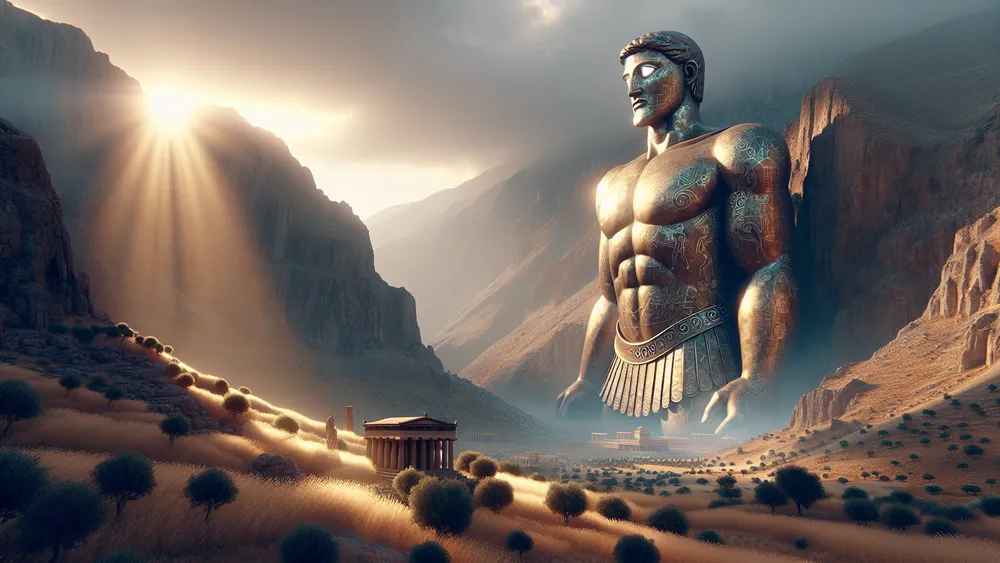
In particular tales, Talos was used in symbolic events to show Crete’s power to neighboring visitors, like how armies might be shown today, which can help make stronger ties or point out strong defense abilities. These stories, though few in words, point to Talos’ multifaceted role in the way people and politics mix in old Crete, suggesting a deeper side to his character shaped by the stories people told long ago.
Moreover, looking at different ancient sources means seeing interesting changes in Talos’ stories, which come from the way stories were passed along and where they came from. In some local stories, Talos was not alone but was one of many giants made to protect other parts of Crete – a plan much like covering a land with watchtowers. Furthermore, views differ, as seen in Roman stories where Talos sometimes appears as a smart creation from their own gods, highlighting how myths change when moving through different cultures. Here is a list of differences and changes found in these old stories:
- Talos as a Group of Protectors: Some changes show Talos as part of a group of big protectors chosen for different areas of Crete.
- Cultural Changes: In Roman stories, Talos often stands for good engineering, turning his story into one about mechanical skill.
- Symbol of Crete’s Strength: In other stories, Talos means not just being strong but symbolizing Crete’s unbreakable will against others.
These different views mean Talos’ story was not fixed but grew through time and places, letting the myths stay important and have an impact across differing lands.
Less-known stories of Talos from various cultures show him as a multifaceted guardian of Crete, illustrating how myths change over time with diverse interpretations, like his role as a symbol of strength or as one of a group of protectors.
What Talos Stood for and Left Behind
In Greek mythology, Talos was a symbol of great strength and unwavering vigilance, which meant a lot to how ancient Greeks thought. Made from bronze, his body was not only a physical guard for Crete but also a sign of firm defense and strong resistance that the island wanted to mean when enemies came.
Like walls standing against attacks, Talos made clear the idea of a guard who protects and does not give up. His story was not just about power but also about military and strategy, which were valued in Greek times, meaning how gods protected them in their stories. Furthermore, Talos left more than just his myths; he had a lasting effect on Greek art and writing through the years.
In different artworks, Talos appeared as an inspiring figure, often seen defending, a theme that shows his job as a protector. Old writings and images used Talos’ story to think about human and god-made things and the weak points of even the toughest beings. Pots with complex images and carved stones in public had these stories, catching interest from people and writers.
These artworks kept his myth strong for ages, keeping him a cultural figure showing strength and never-ending watchfulness. They kept Talos’ legend going, making sure people still saw and thought about it in their art and talks.
Talos’ Spot in Greek Mythology
Once his importance in Greek culture is clear, let’s look at how Talos connected with the group of gods and his place among other mythical protectors.
Talos and His Godly Connections
In Greek mythology, Talos is often described as a creation linked with the gods like Zeus and Hephaestus, though different stories give various views on these godly connections. Some stories say Talos was made by Hephaestus, the god of fire and making things, who in his amazing work made Talos a wonder of skill – a bit like a modern inventor might make a smart, automated guard.

Others suggest Zeus, the king of the gods, gave Talos to King Minos of Crete for protection, which means godly control over the world. This myth means Zeus’ role in keeping Crete safe and shows the close ties between gods and humans. In these stories, Talos isn’t just a robot; he means the skill and will of the gods, connecting human and godly involvement in old stories.
Relationships with Olympian deities point to why Talos was made and what he was for, reflecting the rich mix of beliefs in ancient Greek times, where gods were part of everyday actions on Earth.
Comparing Talos with Other Mythical Protectors
In Greek mythology, Talos stands next to other famous protectors like Cyclopes and Argus Panoptes, each had a specific job decided by their makers.
While Talos, a single bronze giant, was made to guard the land of Crete from invaders, the Cyclopes are known as one-eyed giants who were skilled in making things and also linked to the divine work of Hephaestus.
Especially different in their roles, they are often shown as master blacksmiths who made weapons for the gods, yet still show a theme of hidden strength like a strong but not fully used resource. Argus Panoptes had many eyes and was tasked by Hera to keep an eye on Io, serving as a forever-watchful protector.
Talos and Argus share the idea of protection, while different in how they watch – Talos walked around Crete, but Argus saw everything with his many eyes.

To better see these guardians, here is a table that shows key things about each:
| Guardian | Origin/Creator | Main Job | Special Traits |
|---|---|---|---|
| Talos | Made by Hephaestus; Given by Zeus | Guard Crete from invaders | Made of bronze; molten metal inside |
| Cyclopes | Born from Uranus and Gaia; Work with Hephaestus | Make weapons for gods | Very strong; skilled in crafting |
| Argus Panoptes | Given a job by Hera | Watch and protect | Many eyes; very alert |
These figures underline the jumprsity of protectors in myths, each doing a role that fits the art and culture of ancient Greece. For example, while Talos’ strength and metal body mean admiration for technology then, Cyclopes focus on skilled work, and Argus shows the virtue of never-ending awareness.
Together, these creatures help us see how ancient Greeks thought of protection, not only through physical strength but also through making things and careful watching.
Pantheon of All the Greek Mythology Creatures and Monsters
Greek mythology is famous for lots of magical creatures and monsters, each having their own special traits and stories that have held people’s interest for years. These beings go from scary creatures like Medusa, whose eyes turned folks to stone, to kind beings such as the Nymphs, who watch over nature’s beauty.
Full of variety, this group of mythical figures represents the creative richness of old Greek culture, where every creature had a big part in the stories they were in, adding layers of interest and moral lessons.
For those wanting to jump deeper into this interesting world, a list of all the Greek Creatures and Monsters gives a big overview of these famous beings, letting people learn more about the mythical heritage that still grips audiences today.
FAQs
1. Who created Talos and why?
Talos was created by the god Hephaestus, fashioned as a bronze giant, to protect the island of Crete on behalf of Zeus.
2. How did Talos die according to myth?
How Talos died according to myth varies, but commonly it is told that Medea or Poias exploited his single vein sealed with a nail, causing his life force to drain away.
3. What role did Talos play in ‘Jason and the Argonauts’?
In ‘Jason and the Argonauts’, the role Talos played was that of a formidable guardian protecting the island of Crete from intruders, including the arriving Argonauts.
4. How is Talos depicted in ancient artwork?
Talos is depicted in ancient artwork as a colossal figure crafted from bronze, often portrayed striding along the coast of Crete, with notable features including his metallic sheen and imposing stature reflecting his role as a formidable guardian.

